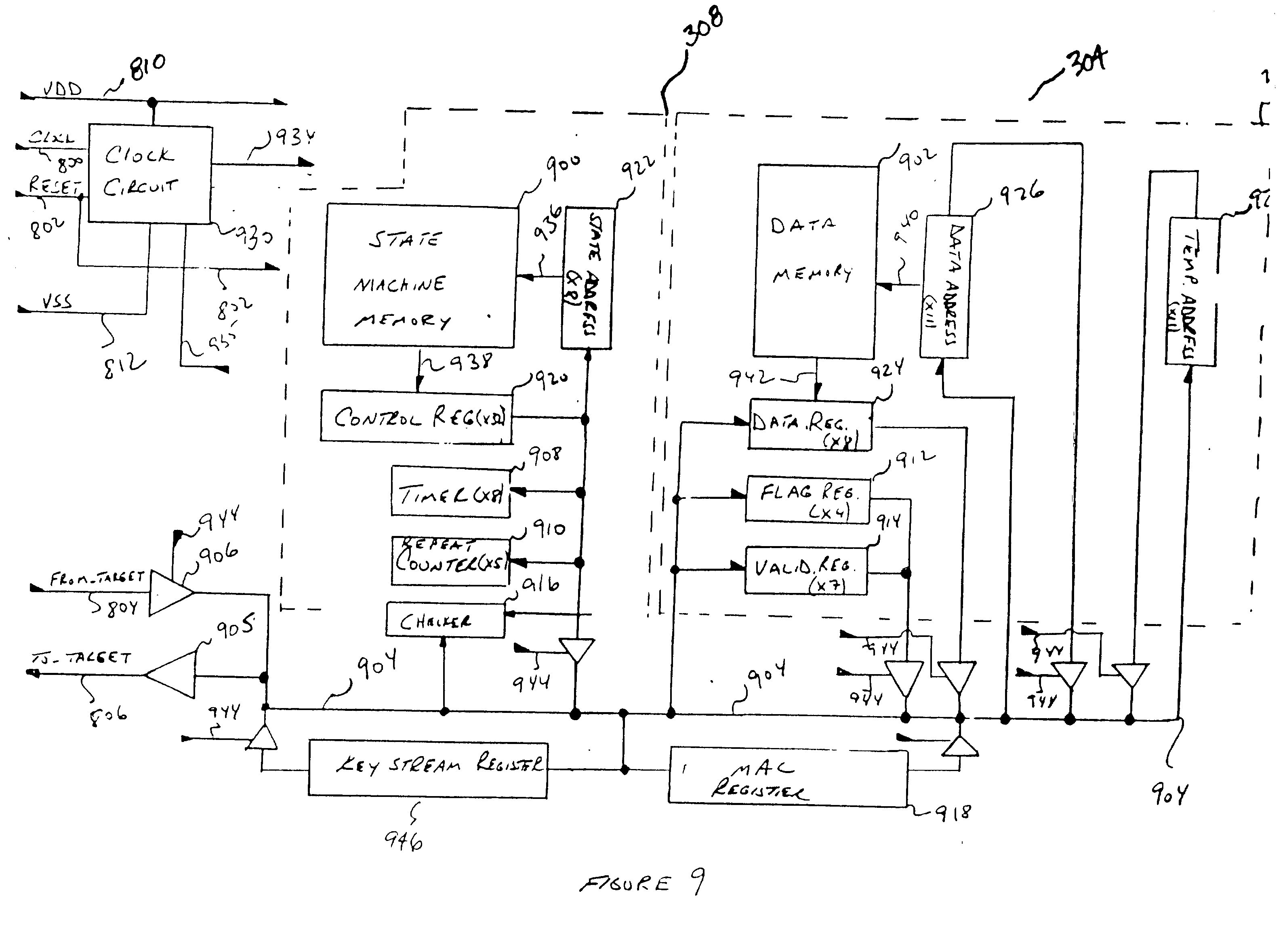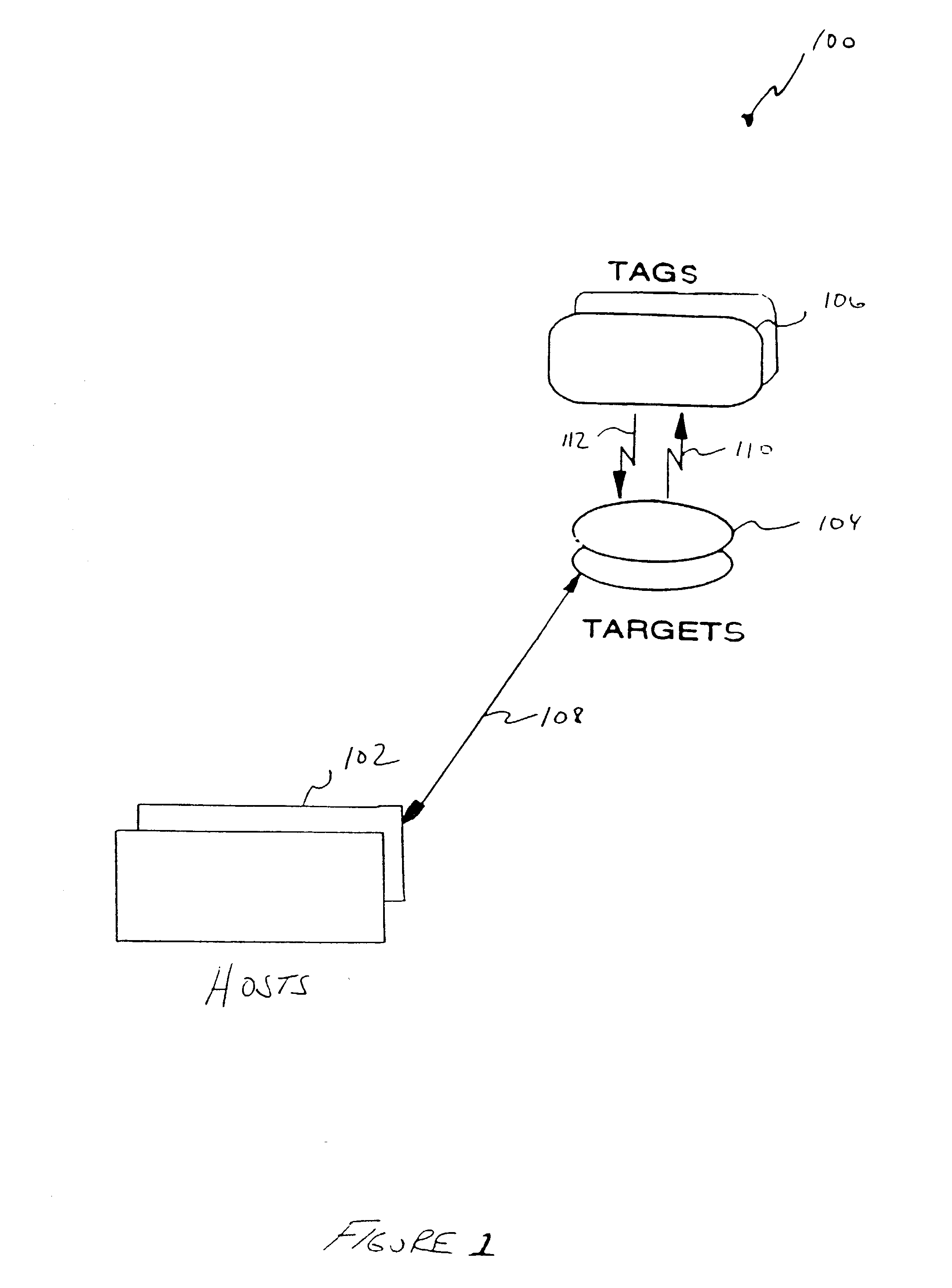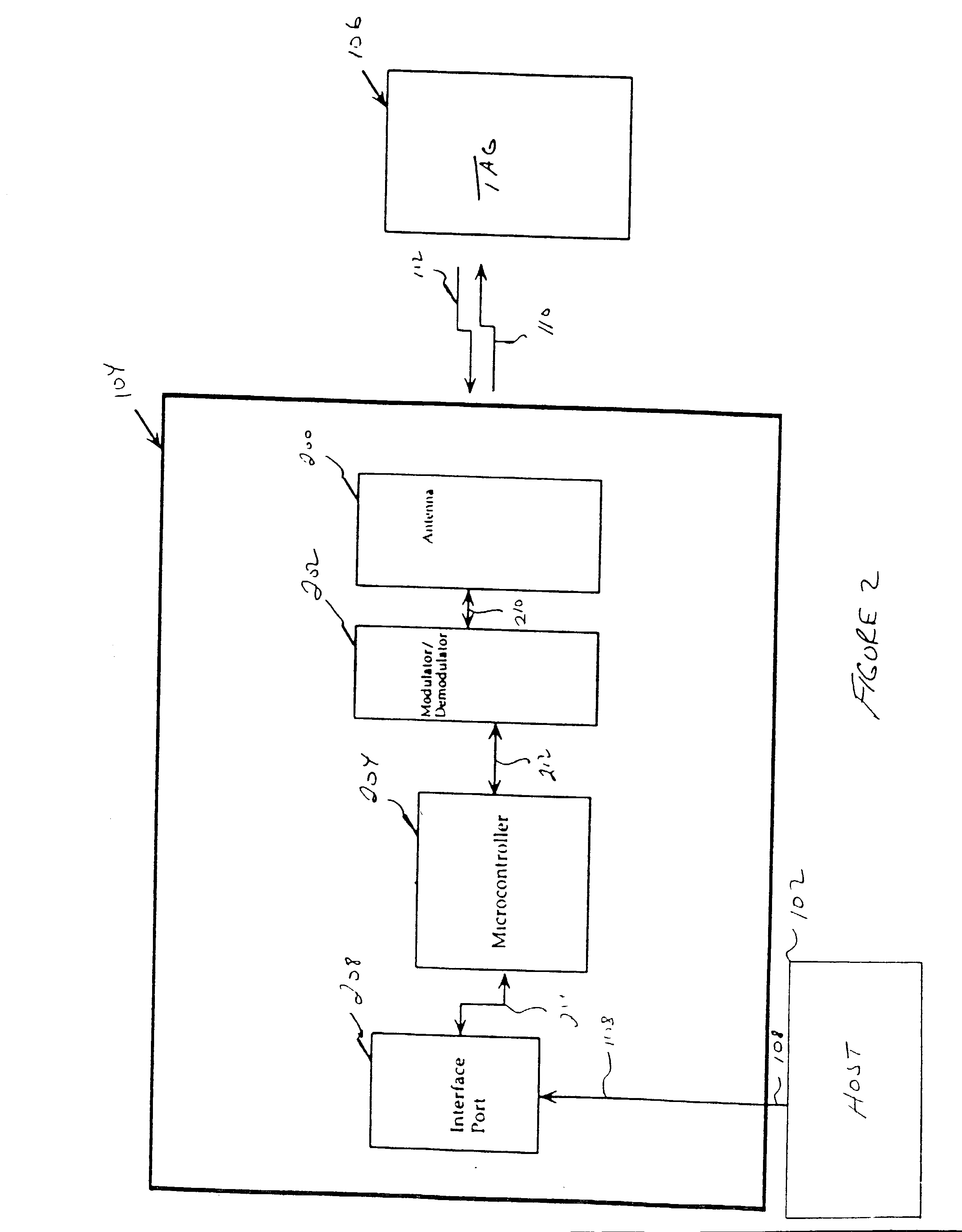Anti-tear protection for smart card transactions
- Summary
- Abstract
- Description
- Claims
- Application Information
AI Technical Summary
Benefits of technology
Problems solved by technology
Method used
Image
Examples
Embodiment Construction
[0042] The currently preferred embodiments of the invention are now described with reference to the figures where like reference numbers indicate like elements. Also in the figures, the left most digit of each reference number corresponds to the figure in which the reference number is first used.
[0043] While the invention is described in the context of an electronic fare collection system for rapid transit or toll applications, it would be apparent to one skilled in the relevant art that the principles of the invention have considerably broader applicability to other systems in which contactless proximity information / data / message is exchanged, collected, or otherwise used.
[0044] The improved Target and Tag of the invention can be used advantageously in a fare collection system similar to that described in International Application Number PCT / US92 / 08892, titled "Non-Contact Automatic Fare Collection System," filed Oct. 19, 1992, WO 93 / 09516, which is incorporated herein by reference ...
PUM
 Login to View More
Login to View More Abstract
Description
Claims
Application Information
 Login to View More
Login to View More - R&D
- Intellectual Property
- Life Sciences
- Materials
- Tech Scout
- Unparalleled Data Quality
- Higher Quality Content
- 60% Fewer Hallucinations
Browse by: Latest US Patents, China's latest patents, Technical Efficacy Thesaurus, Application Domain, Technology Topic, Popular Technical Reports.
© 2025 PatSnap. All rights reserved.Legal|Privacy policy|Modern Slavery Act Transparency Statement|Sitemap|About US| Contact US: help@patsnap.com



